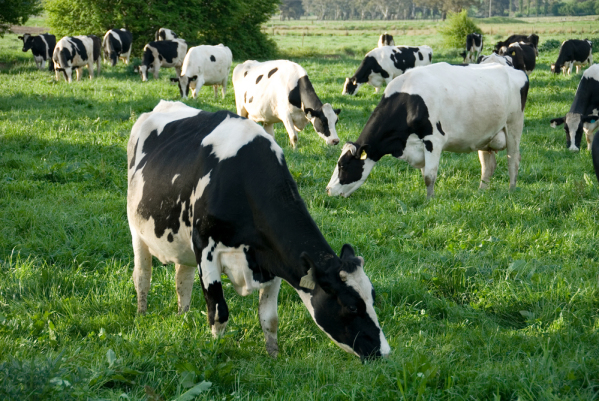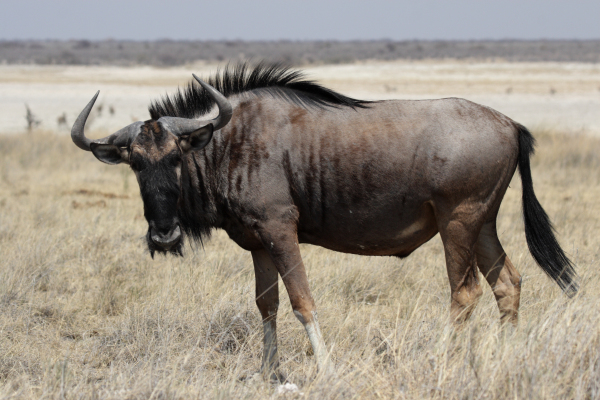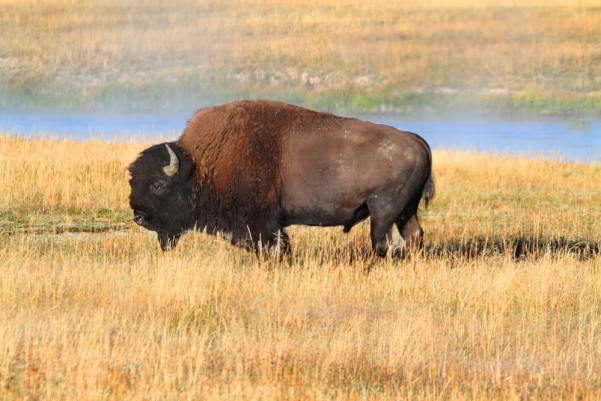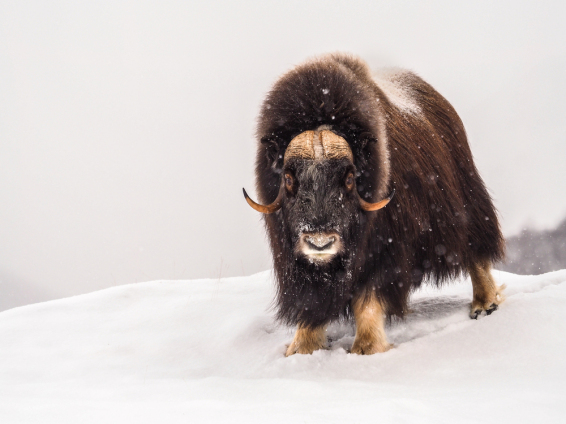The Bovidae family of mammals is classified in order Artiodactyla, and consists of antelope, cattle, goats, and sheep. There are about 143 different species classified in the Bovidae family. Some Bovids have been domesticated for meat, leather, and for use as beasts of burden.

Physical Characteristics
The males of all species of Bovids have horns, However the females of certain species lack these cranial extensions. A horn is a permanent pointed protrusion on the head of many Bovids. Horns consist of a covering of keratin and other proteins surrounding a core of bone.
Many Bovids are classified in a suborder known as Ruminantia, most Ruminants have a four-chambered stomach. Ruminants are unable to digest plant material directly, because their bodies do not produce enzymes that are able to break down cellulose. Digestion occurs sequentially in a multi chambered stomach. In Ruminants with a four-chambered stomach, ingested plant matter is stored in the first chamber, called the rumen, where it softens. They later regurgitate this material, called cud, and chew it again to further break down its cellulose content, which is difficult to digest. The chewed cud goes directly to the other chambers of the stomach; the reticulum, omasum, and abomasum, where it is further digested with the aid of various microorganisms that live in the stomach.
Distribution and Habitat
Wild Bovids can be found on all continents except Australia and Antarctica. Although there are feral Bovids living in Australia. Bovids inhabit all biomes, from rainforest to tundra.
Diet
The diet includes bark, buds, bulbs, flowers, fruit, grass, herbs, leaves, lichens, moss, plants, reeds, roots, sedges, shoots, shrubs, sugarcane, and twigs. Bovids are herbivores, this means they only eat vegetation. There are two types of herbivore, grazing herbivores, and browsing herbivores. Grazing herbivores eat primarily grasses, and browsing herbivores eat leaves, soft shoots, or fruits of high-growing, generally woody plants.
The Bovidae family can be divided into 10 subfamilies that are listed below:
Aepycerotinae. The Impala(Aepyceros melampus) is the only species classified in the Aepycerotinae subfamily. The Impala is an antelope found on the savannas of eastern and southern Africa. Impalas can weigh up to 76 kilograms(168 pounds).

Alcelaphinae. The Alcelaphinae subfamily consists of several antelope including bonteboks, hartebeest, the Topi(Damaliscus lunatus), and wildebeest.
Antilopinae. The Antilopinae subfamily includes the Beira(Dorcatragus megalotis), gazelles, dik-diks, blackbucks, grysboks, springboks, gerenuks, dibatags, the Oribi(Ourebia ourebi), and the Saiga(Saiga tatarica). The Bovids classified in this subfamily are sometimes referred to as true antelope.

Bovinae. The Bovinae subfamily includes domestic cattle, bison, The Cape Buffalo(Syncerus caffer caffer), water buffalos, and the four-horned and spiral-horned antelopes.

Caprinae. The Caprinae subfamily includes The Arabian Tahr(Hemitragus jayakari), goats, sheep, ibex, turs, serrows, gorals, takin, the Markhor(Capra falconeri), chamois, and the Muskox(Ovibos moschatus).
Cephalophinae. Duikers are the only Bovids classified in the Cephalophinae subfamily. Duikers are forest-dwelling antelopes that are found only in Africa.
Hippotraginae. Hippotraginae is made up of grazing antelopes that include oryx, and the Addax(Addax nasomaculatus).
Pantholopinae. The Tibetan Antelope(Panthalops hodgsoni), also known as the Chiru is the only Bovid classified in the Pantholopinae subfamily. The Tibetan Antelope lives on the high alpine steppes of the Tibetan Plateau. Males can reach weights up to 40 kilograms(88 pounds), females can weigh as much as 26 kilograms(57 pounds).
Peleinae. The Grey Rhebok or Grey Rhebuck(Pelea capreolus) is the only species classified in the Peleinae subfamily. The Grey Rhebok is a species of antelope native to South Africa, Lesotho, and Eswatini. The Grey Rhebok weighs 19–30 kg (42–66 pounds).
Reduncinae. The Reduncinae subfamily include the Kob(Kobus ellipsiprymnus), The Kob(Kobus kob), lechwe, The Puku(Kobus vardonii), and reedbucks. The antelope that are classified in the Reduncinae subfamily live in areas near water, such as marshes and floodplains.
